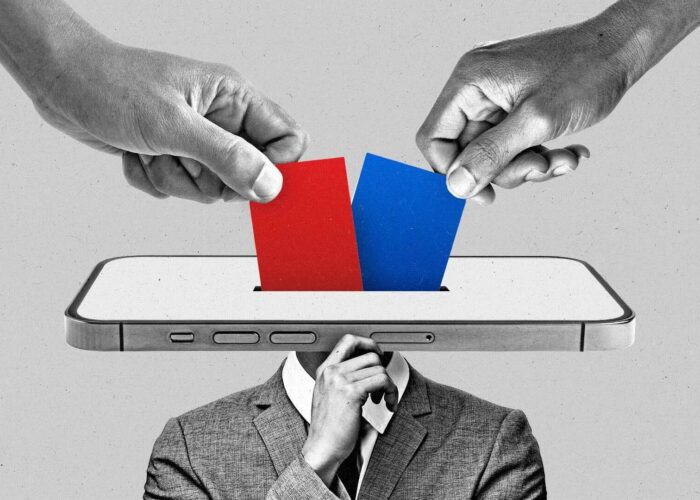The digital advertising landscape is in the middle of a seismic shift. As privacy concerns rise and third-party cookies face their impending demise, advertisers, agencies, and publishers are navigating uncharted territory. Google’s announcement to phase out third-party cookies in Chrome by 2024, combined with existing restrictions in Safari and Firefox, means the era of cookie-dependent advertising is quickly coming to a close.
While this shift presents challenges, it also opens the door to innovation and a reimagining of advertising strategies. Brands now have an opportunity to embrace cookieless solutions that prioritize consumer privacy, foster transparency, and unlock new ways to engage audiences effectively.
So, how can advertisers thrive in a cookieless world? This blog explores the most powerful cookieless advertising solutions that allow brands to connect with their audiences while respecting privacy. Whether you’re a marketer, agency, or publisher, these strategies will prepare you for a privacy-first future.
What Does Cookieless Advertising Mean?
Before diving into solutions, let’s define what “cookieless advertising” means. Traditionally, third-party cookies allowed advertisers to track user behavior across websites, create detailed audience profiles, and deliver personalized ads. This method formed the backbone of programmatic advertising and behavioral targeting.
Cookieless advertising, however, shifts away from third-party cookies and focuses on alternative methods like:
- First-party data: Data collected directly by brands from their customers.
- Contextual targeting: Ads matched to page content instead of user behavior.
- Identity solutions: Alternative frameworks to identify and track users securely.
- Machine learning & AI: Predictive tools that analyze behavior without user-level tracking.
In short, cookieless advertising balances effective targeting with user privacy, transparency, and compliance with regulations like GDPR and CCPA.
Why Is the Industry Moving Toward a Cookieless Future?
The shift to cookieless advertising is driven by multiple forces, including:
-
Growing Privacy Concerns
Consumers are increasingly aware of how their personal data is tracked, stored, and used. A 2022 Pew Research study found that 79% of Americans worry about how companies use their data. Cookieless solutions empower advertisers to align with consumer expectations and build trust.
-
Regulatory Changes
Privacy laws like the General Data Protection Regulation (GDPR) in Europe and the California Consumer Privacy Act (CCPA) in the U.S. require businesses to handle data responsibly. Non-compliance can lead to hefty fines and damaged reputations.
-
Browser Restrictions
Safari and Firefox already block third-party cookies by default. While Google has pushed back its timeline for the deprecation of cookies, Google Chrome, which commands over 60% of browser usage, will eliminate third-party cookies in the near future.
-
Demand for Transparency
Consumers want brands to be transparent about data collection practices. Cookieless strategies help advertisers build more ethical, privacy-conscious approaches to targeting and engagement.
Top Cookieless Advertising Solutions
Now that we understand the why, let’s explore the most effective solutions to replace third-party cookies while maintaining strong campaign performance.
1. First-Party Data: Your Most Valuable Asset
First-party data is the most reliable and compliant alternative to third-party cookies. It includes data collected directly from your audience, such as:
- Website interactions: Page views, clicks, purchases, and time spent
- App behavior: In-app activity, preferences, and actions
- Email engagement: Open rates, clicks, and sign-up forms
- CRM data: Customer details, purchase history, and loyalty memberships
How to Leverage First-Party Data:
- Customer Data Platforms (CDPs): Platforms like Segment, Tealium, and BlueConic consolidate first-party data across touchpoints, helping brands create accurate audience profiles
- Website & App Analytics: Tools like Google Analytics 4 (GA4) allow you to measure user behavior effectively without cookies
- Loyalty Programs: Encourage customers to share their data in exchange for rewards, discounts, or exclusive experiences
Tip: Be transparent about how you collect and use first-party data. Provide clear opt-ins to foster trust and improve data quality.
2. Contextual Targeting: Relevance Without Tracking
Contextual targeting doesn’t rely on cookies. Instead, it serves ads based on the content of the webpage a user is currently viewing. For example, a fitness equipment brand might place ads on health and wellness blogs.
Benefits of Contextual Targeting:
- Fully privacy-compliant.
- Delivers relevant ads in real time.
- Doesn’t require user profiles or personal data.
How It Works: Advanced platforms use Natural Language Processing (NLP) and semantic analysis to analyze page content, identify keywords, and match ads to relevant topics.
Why It Works: Contextual targeting aligns ads with user intent, driving higher engagement without compromising privacy.
3. Identity Solutions: The New Way to Recognize Users
Identity solutions replace third-party cookies with privacy-friendly methods to identify users across websites and devices. These solutions use hashed emails, first-party data, or consented log-ins to create persistent IDs.
Leading Identity Solutions:
- Unified ID 2.0 (UID2): Created by The Trade Desk, UID2 encrypts user email addresses to enable ad targeting while protecting privacy
- LiveRamp’s IdentityLink: A people-based identity solution that securely connects user data across channels
- Lotame Panorama ID: An interoperable, privacy-focused identity solution for cross-channel advertising
How It Works: Users provide consent (e.g., through email sign-ins), and their data is hashed or encrypted to ensure anonymity.
Why It’s Important: Identity solutions provide a scalable, privacy-compliant alternative to cookies, ensuring accurate targeting and measurement.
4. Google Privacy Sandbox: The Chrome Solution
Google’s Privacy Sandbox aims to replace third-party cookies in Chrome with privacy-focused APIs. While still in development, it offers promising solutions for targeting, measurement, and remarketing.
Key Privacy Sandbox Tools:
- Topics API: Categorizes users into interest groups based on browsing history (e.g., travel, fitness). Advertisers can target these broad topics without accessing individual user data
- FLEDGE: Enables remarketing within Chrome without tracking users across websites
- Attribution Reporting API: Allows advertisers to measure ad performance while maintaining user anonymity
What to Watch: As Privacy Sandbox solutions evolve, they’ll become a cornerstone for cookieless advertising.
5. AI and Machine Learning: Predictive Advertising
Artificial intelligence (AI) and machine learning enable advertisers to predict user behavior and optimize campaigns without cookies.
How AI Supports Cookieless Advertising:
- Predictive Analytics: AI analyzes historical data to predict what audiences are likely to engage with
- Audience Segmentation: Machine learning identifies audience patterns and builds accurate segments using first-party data
- Dynamic Creative Optimization (DCO): AI tools personalize ad creatives in real time based on user context or intent
Why It Matters: AI removes the guesswork, enabling accurate targeting and optimization in a privacy-compliant way.
6. Data Clean Rooms: Secure Collaboration
Data clean rooms allow advertisers and publishers to combine and analyze data sets securely while preserving user anonymity. No personally identifiable information (PII) is shared, and the data remains encrypted.
How It Works:
- Advertisers and publishers upload their first-party data into a clean room.
- The data is analyzed to identify audience overlaps or insights.
- Results are shared in aggregate form to protect user privacy.
Leading Data Clean Rooms:
- Domo
- Amazon Marketing Cloud
- Snowflake
Why Use Clean Rooms?
They enable collaboration and audience analysis without violating privacy regulations.
7. Zero-Party Data: Direct Engagement
Zero-party data refers to information users proactively and willingly share with brands, such as preferences, interests, and feedback.
How to Collect Zero-Party Data:
- Interactive quizzes and polls.
- Preference centers on apps or websites.
- Surveys and feedback forms.
Why It’s Valuable: Zero-party data is transparent, accurate, and privacy-compliant, making it ideal for personalized marketing.
How to Prepare for the Cookieless Future
To thrive in a privacy-first world, advertisers need a strategic, proactive approach:
- Audit Your Data: Evaluate your first-party data assets and identify areas for improvement
- Test Contextual Campaigns: Experiment with contextual targeting to understand its impact
- Adopt AI Tools: Use AI and machine learning to analyze and predict user behavior
- Explore Identity Solutions: Implement identity frameworks like UID2 or LiveRamp
- Leverage Data Clean Rooms: Partner with publishers to analyze aggregated audience insights
- Communicate with Transparency: Clearly inform users how their data is collected and used
Final Thoughts: Embracing the Future of Advertising
The shift to a cookieless world isn’t the end of effective digital advertising—it’s the beginning of a smarter, privacy-first era. By leveraging first-party data, embracing contextual targeting, and adopting identity solutions, brands can build meaningful connections with their audiences while respecting privacy. At Digital Mouth, we specialize in forward-thinking media strategies that drive measurable success in the cookieless world. Ready to future-proof your advertising efforts? Contact us today and let’s unlock the full potential of your campaigns.



